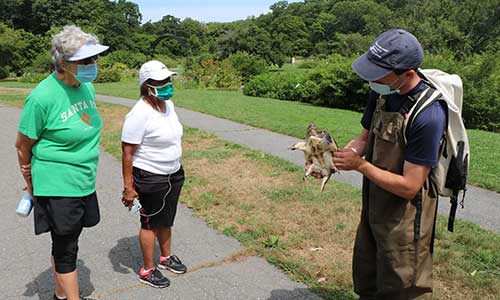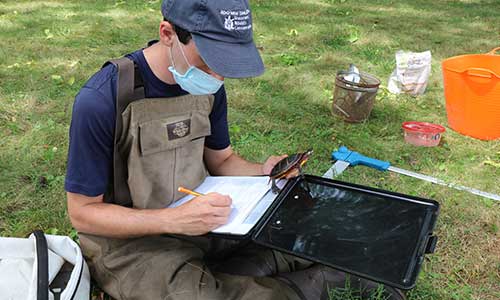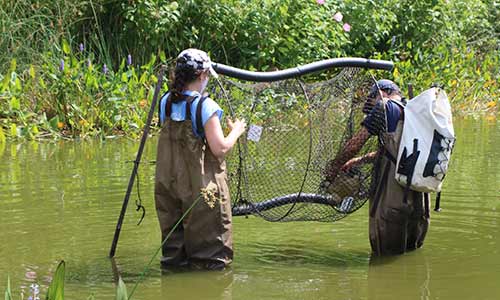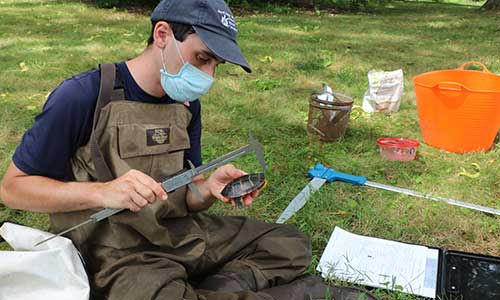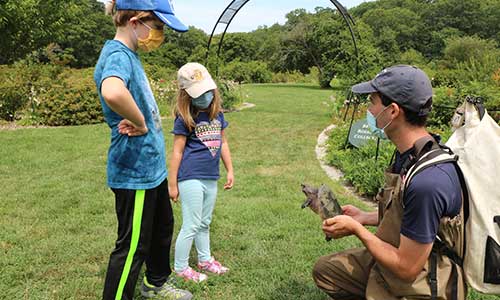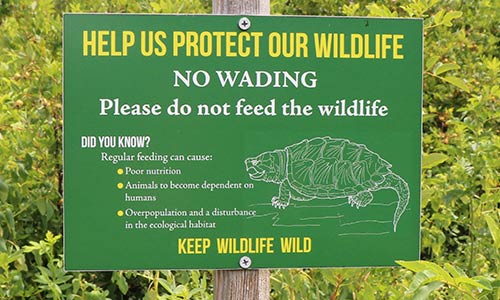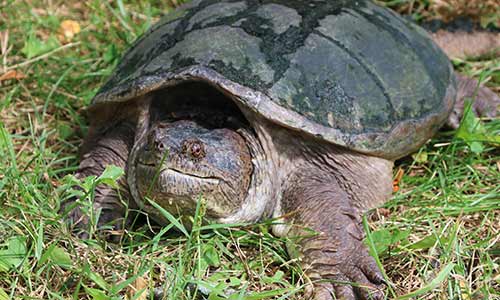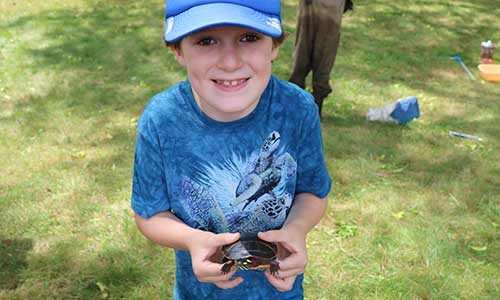
Turtles at the Arnold Arboretum
The Arboretum is an oasis in the city of Boston, not just for trees, but also many species of wildlife. We’ve partnered with the Arboretum to monitor and protect the turtles that live in their ponds.
The Arnold Arboretum of Harvard University is an oasis for urban wildlife. As part of Boston’s famous Emerald Necklace, the Arnold Arboretum is a refuge for rare plants from around the world, as well as more familiar native New England species. The Arboretum’s three constructed ponds and large wet meadow host a thriving population of wildlife throughout the year, including herons, hawks, frogs, turtles, fish, and dragonflies. At the invitation of Arnold Arboretum staff, Zoo New England’s Field Conservation team began a survey of the wildlife using Faxon, Rehder, and Dawson Ponds, with a particular focus on the native turtle populations.
ZNE biologists captured and marked more than 20 unique individual painted turtles, a dozen common snapping turtles, and five introduced slider turtles that were likely released from the pet trade. Our team also affixed radio transmitters to several of the adult snapping turtles to better understand their movements and habitat use in this unique setting. Although common snapping turtles are abundant throughout the eastern and central United States, their survival, habitat use, and reproduction in urban settings like the City of Boston are not well understood.
According to our earliest findings, the ponds and the Meadow of the Arnold Arboretum form a habitat network. Several turtles were observed moving between ponds throughout the summer, especially as smaller ponds dried down while the largest pond retained some water. When rains returned in the fall, many turtles then traveled back to the smaller ponds or to the Meadow near the visitors’ center. These shallower wetlands were also the spots of choice for the snapping turtles to pass the winter in hibernation.
In 2021, Zoo New England biologists returned to the Arboretum to consult on the planned dredging of the property’s two smaller ponds, Faxon and Rehder. ZNE staff helped set up turtle traps to relocate animals before dredging activities began, and silt fences with pitfall traps to sample the wildlife moving across the landscape while preventing re-entry to the ponds until dredging was complete. Arboretum staff monitored the traps every day and transported the animals to safety once caught. Thanks to this team effort, dozens of turtles, frogs and other animals were saved from being caught up in the dredge barge’s path. ZNE biologists also transported some of the native wetland plants that would be impacted by the dredging and replanted them in the wild, where they will serve as crucial cover for young turtles at one of our field sites.
In 2022, we documented shifts in invertebrate and fish communities after the 2021 dredging and will continue to monitor ecosystem health and resilience in the coming years. We've caught and identified 35 painted turtles, 27 snapping turtles, and for the first time in 2022, a musk turtle (a rarely seen species in Boston) in Rehder Pond. The Arboretum has continued to be a valuable partner for Zoo New England, helping to grow rare native plants for habitat restoration projects and offering joint programs on the Arboretum's beautiful grounds, such as evening bat and owl walks.

